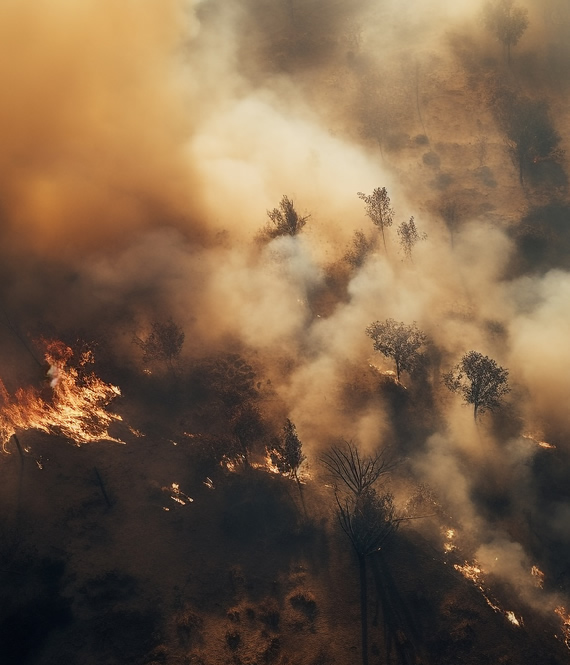
OSHA Urges Employers To Protect Workers From Wildfire Smoke, Poor Air Quality
We recommend helpful products in our articles. Read our full disclosure here. The content on this website is not intended to be a substitute for professional advice, diagnosis, or treatment.
With over 460 wildfires currently burning in Canada, and the smoke carrying over to the United States, the Occupational Safety And Health Association (OSHA) are urging employers to take measures to protect outdoor workers from air pollution.
“Wildfire smoke exposure can create major health hazards for outdoor workers.
These hazards can be reduced with knowledge, safe work practices and appropriate personal protective equipment,” said Assistant Secretary for Occupational Safety and Health Doug Parker.
“I urge all employers to have plans and preparations in place to protect workers by preventing or minimizing exposure to hazardous air quality.”
The health risks of smoke exposure
Exposure to wildfire smoke can result in a host of health risks for workers, such as, headaches, nausea, thirst, heat stress, weakness, dizziness, and eye and respiratory tract irritation.
The most severe health risk, however, is potential exposure to the tiny particulate matter within the smoke.
Fine particles of burned matter (usually spanning 2.5 micrometers or less in diameter) can enter the body through the throat and nose, and end up in the lungs and bloodstream.
In turn, these particles may lead to serious health issues, such as heart, lung, and kidney disease.
In severe cases, air pollution can also result in death.
In fact, air pollution is responsible for as many as 450,000 workplace deaths on average globally, according to the World Health Organization.
In the instance of death being caused by the negligence or intention of someone else, it’s important bereaved loved ones file a lawsuit to hold guilty parties to account.
Wrongful death attorneys can help bereaved families consider their legal options and obtain any compensation owed.
Protecting employees
OSHA now recommends employers take immediate measures to minimize worker exposure to air pollution wherever possible.
In particular, employers are advised to move employees indoors.
If outdoor work is truly unavoidable, adequate personal protective equipment must be provided – this includes masks and eye shields – to protect workers from the smoky air.
Work schedules may also need to be adjusted to include more rest breaks (rest breaks may also need to be extended).
Educating employees on the signs of smoke inhalation is also crucial (common symptoms include coughing, choking, and impaired breathing).
Employees should also know to inform their superiors if any of these symptoms are noted.
If smoke gets into the eyes, it’s important first aid measures are available – cold compresses and artificial tears can be used to relieve eye irritation.
Ensuring healthy indoor air quality
The importance of air filtration measures also shouldn’t be underestimated.
High-efficiency particulate absorbing (HEPA) filters, for example, effectively remove smoke from the air, along with other irritants, including pollen, dust, and viruses.
Moreover, a comprehensive risk assessment is also useful for highlighting hazards in the workplace.
An air quality assessment can play an important role here to ensure clean, healthy air in all areas employees are working.
Conclusion
All workers have the right to clean, breathable air.
By taking steps to protect employees from smoke exposure, employers can better keep their workers safe and productive.
"We love to research problems, examine studies, analyze solutions, and share with you ideas that make life healthier. You can learn about us and our editorial standards here. Have suggestions or feedback to share? Send us a message!."













Leave a Comment